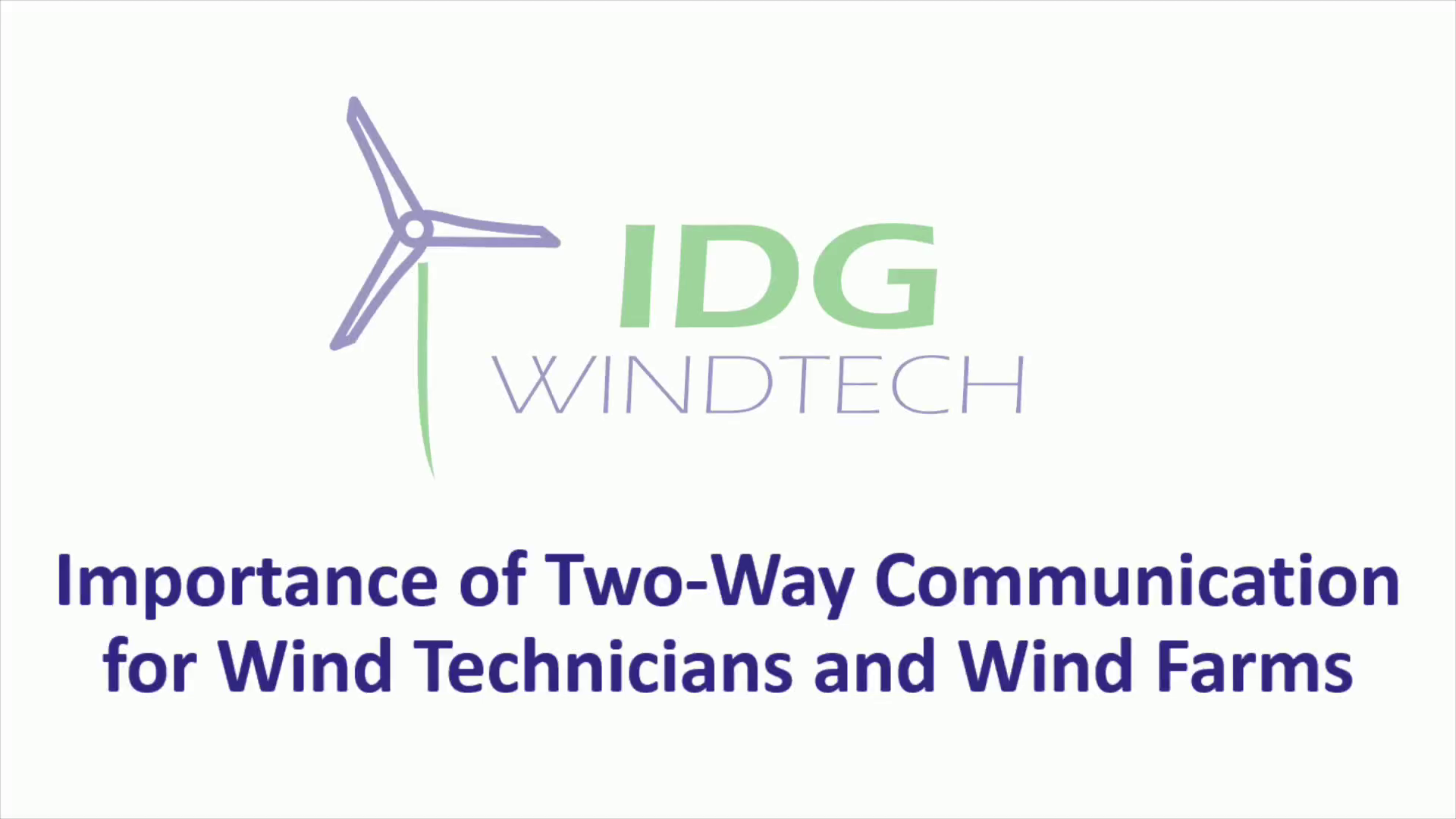
Importance of Two Way Communication for Wind Technicians and Wind Farms
Scene 1 (0s)
[Audio] Importance of Two-Way Communication for Wind Technicians and Wind Farms.
Scene 2 (7s)
[Audio] Importance of Two Way Communication Effective communication is indispensable to ensuring the safety, efficiency and overall success of wind energy operations..
Scene 3 (20s)
[Audio] Safety During Operations: Safety is paramount in the wind energy industry. Wind technicians often work at high altitudes and in difficult conditions, where the slightest mistake lead to accidents and even death. Two-way communication allows technicians to stay in contact with each other, supervisors, and emergency response teams. In the event of an accident, immediate communication is vital for a quick response, minimizing injuries and potentially saving lives..
Scene 4 (53s)
[Audio] Emergency Situations: Wind farms are susceptible to various emergencies, including fires, equipment failures and severe weather events. Two-way communication provides a lifeline during these crises. Technicians can quickly alert others to danger, request assistance, and coordinate evacuation or emergency response efforts ensuring everyone is informed and safe..
Scene 5 (1m 21s)
[Audio] Maintenance and Repairs Routine: Wind turbines require regular maintenance and occasional repairs to operate efficiently. Effective communication allows technicians to coordinate their efforts, share information about equipment status, and ensure tasks are completed safely and on schedule. Without clear communication, maintenance procedures can be delayed or executed incorrectly..
Scene 6 (1m 47s)
[Audio] Performance Optimization of the Turbines: To maximize energy production, wind turbines must be monitored and adjusted in real time. Two-way communication facilitates data sharing and remote control, allowing technicians to monitor turbine performance, diagnose problems, and make necessary adjustments promptly. This ensures that the turbines operate at maximum efficiency, increasing power generation and profitability..
Scene 7 (2m 17s)
[Audio] Improved Efficiency Wind Farms: Wind farms consist of multiple turbines spread over a large area. Coordinating your operations and troubleshooting problems across all turbines requires fluid communication. Two-way communication ensures that wind farm staff can quickly share information, identify problems and implement solutions. This leads to better overall efficiency and higher energy production..
Scene 8 (2m 47s)
[Audio] Challenges and Solutions: Wind farms often face challenges such as adverse weather conditions, remote locations and unreliable grids. Two-way communication provides a means to overcome these challenges. Through the use of satellite communication, mobile applications and specialized radios, wind technicians can maintain contact regardless of the environment ensuring continuity of operations..
Scene 9 (3m 15s)
[Audio] Compliance and Regulatory Requirements: The wind energy industry is subject to various regulations and safety standards. Compliance often requires extensive reporting and documentation. Two-way communication tools help wind farms meet these regulatory requirements by providing a means to document incidents, safety measures and equipment status..
Scene 10 (3m 41s)
[Audio] Conclusion Two-way communication is the backbone of safe and efficient wind energy operations. It safeguards the lives of wind technicians, ensures turbines operate optimally and allows wind farms to respond effectively to emergencies and challenges. As the wind energy sector continues to grow, the importance of effective communication will only increase, making it a critical aspect of success in the industry..
Scene 11 (4m 10s)
[Audio] Thank You!. Thank You!.